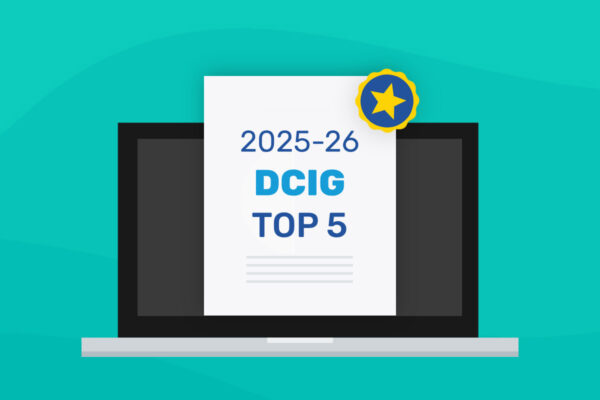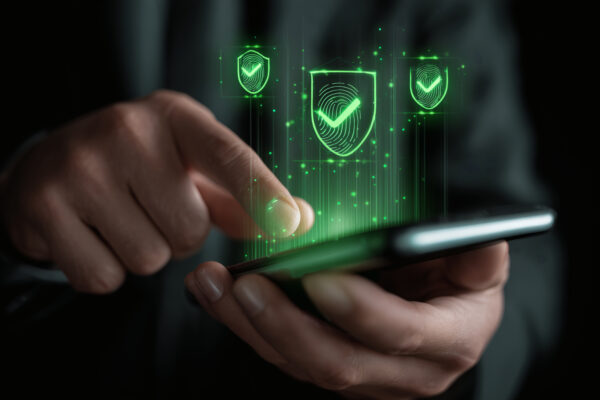Halloween special: The spookiest cyber incidents of 2025 & how to survive them
From a massive cyber breach that sent shockwaves through Salesforce customers worldwide to the most expensive cyberattack ever recorded in the UK, 2025 has been the spookiest year yet for cybersecurity.
Ransomware threats are multiplying and phishing kits and ransomware-as-a-service models are making it easier than ever for threat actors to launch sophisticated attacks. AI-powered malware is getting smarter, faster and harder to catch. As threat actors evolve, many organizations are struggling to keep up. Without proactive defense strategies, they risk starring in their own cyber horror stories, where downtime, data loss and compliance violations become the terrifying plot twists.
In this blog, we’ll dig up some of 2025’s most chilling cyber incidents — three real-world cases that shook entire industries — and share strategies to keep such cyber ghouls at bay. And when things go sideways? We’ll show how Datto BCDR can be your confident ally, protecting your business-critical data and maintaining business continuity, no matter what lurks around the corner.
When threats got real: The most haunting cyberattacks of 2025
This year, we witnessed cyberattacks that didn’t just steal data but disrupted entire industries, cost millions and exposed just how vulnerable even the biggest players can be. Below, we unearth three of the year’s most haunting incidents. Each one reveals what went wrong, how deep the damage ran and why no organization — no matter how large — is immune to the evolving threat landscape.
Cyber incident 1: Salesforce customers around the globe
This was more than a breach — it was a global wake-up call. A massive cyberattack on Salesforce customers exposed over a billion records, showing how social engineering and third-party integrations can become the weakest links, even when the core platform remains secure.
The first scare: Social engineering strikes at scale
In one of the most alarming campaigns of 2025, a ransomware group with claimed ties to LAPSUS$, Scattered Spider and ShinyHunters announced they had stolen over 1 billion Salesforce records containing personally identifiable information (PII). Their multipronged attack targeted Salesforce customers, not the platform itself, using highly effective social engineering tactics.
In one campaign, attackers posed as Salesforce IT technicians and used voice phishing (vishing) to trick employees into installing a trojanized version of the Salesforce Data Loader. In another, hackers exploited stolen OAuth tokens that were associated with the customer engagement vendor Salesloft’s Drift AI chat agent. This widespread breach affected close to 800 organizations, including global heavyweights like Google, Allianz Life, Kering, Qantas, Stellantis, TransUnion and Workday.
The shockwave: Sensitive data spills into the wild
While Salesforce confirmed that the attacks were not due to vulnerabilities in its systems and that it would not yield to extortion, the fallout was swift and severe. On October 12, Qantas confirmed that cybercriminals had published data belonging to more than 5 million of its customers, including full names, email addresses, phone numbers, dates of birth, frequent flyer numbers and even meal preferences.
Workday also reported exposure of personal data such as names, phone numbers and email addresses — the kind of information that attackers often weaponize in further social engineering campaigns. The sheer scale of the breach, both in terms of the number of records and high-profile victims, sent shockwaves through every industry that relies on Salesforce.
The chilling aftermath: Trust shaken, threats evolving
This incident underscores how dangerous today’s cyberthreats have become, especially when social engineering is involved. By blending impersonation, phishing and OAuth token abuse, attackers were able to slip past defenses and exploit the human element. It’s a stark reminder that the threat doesn’t need to break your technology when it can simply trick your employees or third-party vendors.
Cyber incident 2: Jaguar Land Rover
What started as a digital breach quickly snowballed into one of the costliest disruptions in UK history. When Jaguar Land Rover (JLR) was hit with a cyberattack in late August, the consequences rippled far beyond its own operations, paralyzing production lines, impacting thousands of suppliers and causing an economic shock that will take months to fully recover from.
The first scare: Production screeches to a halt
On August 31, JLR was forced to shut down systems across its global manufacturing operations in response to a serious cyberattack. While the company acted swiftly to contain the threat — pausing operations as a precaution — the incident brought production to a complete standstill the next day.
Although JLR confirmed that no customer data was compromised, the attack is believed to have targeted the company’s operational systems directly. With suspected ties to the same cybercrime collective behind other high-profile breaches this year — LAPSUS$, Scattered Spider and ShinyHunters — the attackers left little doubt about their intent to disrupt and damage the company at scale.
The shockwave: Economic chaos across the supply chain
The financial impact was staggering. JLR’s five-week production halt led to estimated losses of £1.9 billion, earning the title of the most economically damaging cyberattack in UK history. More than 5,000 supply chain partners were affected, facing delayed payments and months of operational setbacks. Some now face up to six months of credit difficulties — a painful reminder of how deeply a cyberattack on one organization can ripple across an entire ecosystem.
The chilling aftermath: Operational risks in the spotlight
The fallout shows how cybercriminals are expanding their reach beyond data breaches, going after the lifeblood of businesses — operational continuity. JLR’s global shutdown is a reminder that cyber resilience isn’t just about protecting data but also about keeping your business running when everything else stops.
Cyber incident 3: Western Sydney University
In one of the education sector’s most alarming cyber incidents of the year, Western Sydney University fell victim to a sprawling, multilayered attack that exposed deeply personal data from thousands of students. The attackers didn’t storm the front gates —they slipped in quietly through a web of third- and fourth-party connections.
The first scare: Strange activity, sinister origins
The first signs of trouble emerged on August 6 and again on August 11, when the university detected unusual activity in its student management system — a platform hosted by a third-party cloud provider. The university quickly launched an investigation, instructing the provider to shut down access.
Investigators later discovered that the breach began much earlier, in June, and originated from an entirely different external system. That system was indirectly linked to the cloud platform, creating a daisy-chain of suppliers that attackers exploited to gain unauthorized access and exfiltrate student data over several months.
The shockwave: Personal data laid bare
The scope of data stolen was staggering. Names, birth dates, driver’s license numbers, bank account details, passport and visa records, payroll information, tax file numbers and even sensitive health, legal and disability records were all compromised.
To make matters worse, the stolen data was weaponized. On October 6, the university confirmed that fraudulent emails had been sent to members of its community — an alarming example of turning stolen data into active phishing threats.
The chilling aftermath: Supply chains under scrutiny
The attack didn’t exploit the university’s systems directly but instead infiltrated its digital ecosystem through third- and fourth-party platforms. It’s a reminder that cybersecurity doesn’t end with your own tools and policies. When trust is placed in vendors and partners, their weaknesses become your vulnerabilities. And when those cracks are exploited, the consequences can haunt institutions for months or even years.
Banish the breach: Practical steps to strengthen cyber-readiness
Cyberattacks don’t announce themselves. They creep in quietly, often undetected, and strike when your guard is down. But businesses that prepare, educate and invest in the right tools are far less likely to be caught in the dark.
Here are three essential strategies to help you keep threats contained, reduce damage and bounce back quickly — no spells or potions required.
1. Be battle-ready with a strong incident response plan
An incident response plan (IRP) is a structured, step-by-step strategy that guides your organization through detecting, responding to and recovering from security incidents such as ransomware, data breaches or phishing attacks. It ensures that when a threat strikes, every team member knows exactly what actions to take, in what order and with which tools.
A well-defined IRP helps minimize disruption, contain damage, protect critical data and maintain business continuity. Without it, even a small incident can quickly spiral into a costly and time-consuming disaster. Quick, coordinated action is only possible when roles, communication channels and escalation paths are clearly established and routinely tested.
Focus on these core elements:
- Asset visibility and role assignment: Maintain an updated inventory of systems, tools and personnel. Define who does what during a disruption.
- Centralized coordination: Use a dedicated response platform or shared playbook to streamline communication and document actions. This avoids delays caused by fragmented messaging.
- Frequent testing and drills: Simulate real-world scenarios through tabletop exercises to identify weak points and build muscle memory across teams. Practice ensures confidence and precision during actual incidents.
An incident response plan is only effective if it’s current, tested and clearly understood by everyone involved.
Want a comprehensive checklist for building your cybersecurity incident response plan? Read our complete guide on incident response planning.
2. Turn your end users into your strongest security layer
Phishing, social engineering and impersonation are now among the most successful entry points for cybercriminals. Without proper training, even tech-savvy employees can fall for sophisticated scams. That’s why security awareness training must be an ongoing initiative.
Your training program should focus on helping users:
- Recognize phishing emails, suspicious links and vishing attempts.
- Understand how attackers use urgency, fear or impersonation to manipulate actions.
- Report suspicious activity early to prevent escalation.
When users are well-informed and alert, they become a powerful front line in your cyber defense strategy.
3. Recover swiftly with modern backup and disaster recovery tools
If attackers manage to break through, your ability to recover data quickly and securely becomes the most important part of your defense. An advanced business continuity and disaster recovery (BCDR) solution ensures that your organization can secure data, continue operations and recover fast even during major disruptions.
Here are the essential features to look for in a BCDR solution:
- Immutable backups: Immutable storage ensures your backup copies cannot be altered or corrupted by ransomware or malicious insiders. Even if attackers gain system access, they cannot compromise these protected copies, giving you a guaranteed path to recovery.
- Built-in ransomware detection: Advanced anomaly detection continuously scans backup data for unusual patterns or encrypted file behavior. By spotting suspicious activity early, you can isolate and address infections before they spread.
- Instant virtualization: With instant virtualization, you can boot critical systems directly from your backup image, allowing your team to resume operations while full recovery processes continue in the background. This dramatically reduces downtime and keeps productivity intact.
- Automated backup verification: Backups are of no use if they can’t be recovered when it matters. Automated verification tests guarantee each backup’s integrity and recoverability, ensuring that when you need to restore, you know your data is clean, complete and readily available.
- Flexible recovery options: Every incident is different, and flexibility matters. Whether you need to restore a single file, an application, a virtual machine or an entire infrastructure, modern BCDR platforms allow granular, full or cloud-based recovery options tailored to your business needs.
Step into 2026 stronger: Build your cyber resilience with Datto BCDR
Cyberattacks can strike at any moment. Without a reliable BCDR strategy, businesses risk extended downtime, critical data loss and long-term financial and reputational damage.
That’s why you need Datto BCDR — a comprehensive business continuity and disaster recovery solution built for modern IT environments. Datto BCDR offers more than just backups. It provides full-scale protection, built-in resilience and the ability to recover fast when it matters most. With immutable backups that can’t be altered or corrupted, built-in ransomware detection that flags threats early, instant virtualization on-site and off-site, and automated screenshot verification that ensures backup integrity, Datto BCDR helps you maintain control, even in the face of a severe disruption.
Don’t let your business become the next horror story. Learn more about how Datto BCDR can help you build cyber resilience.




